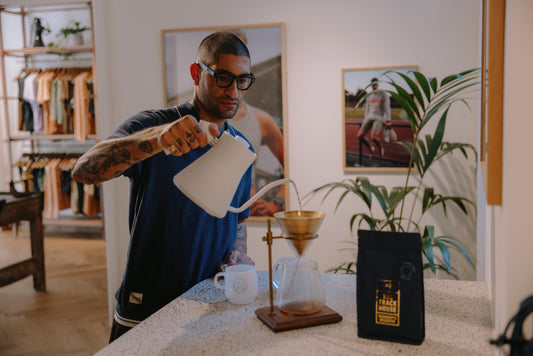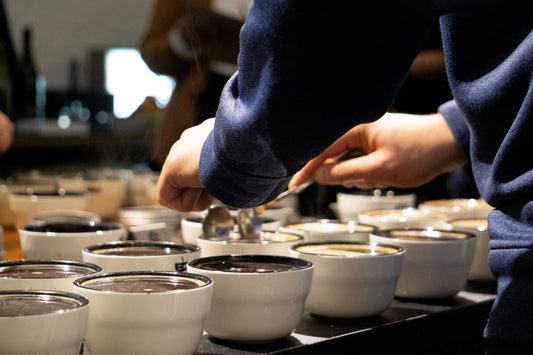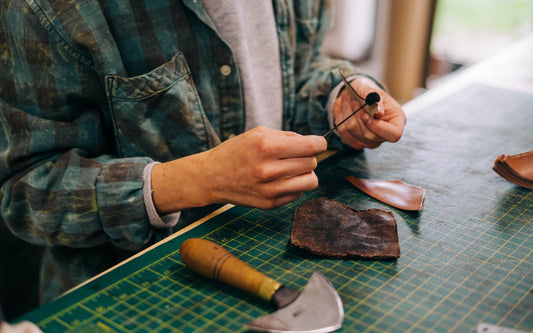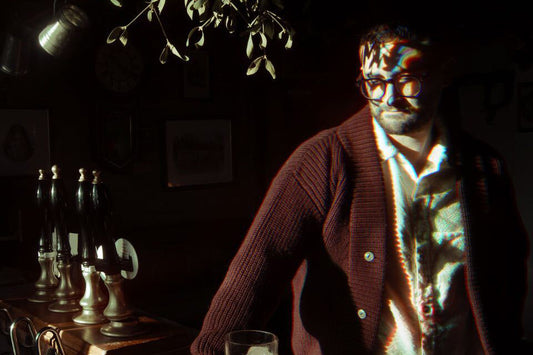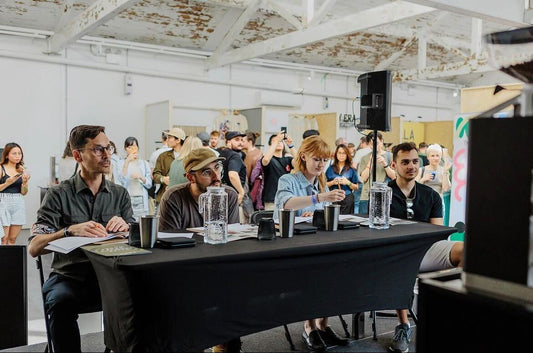Our staff congregate fortnightly in our roastery for an afternoon of cupping to explore the interesting avenues of taste, flavour and coffee brewing. These sessions are invaluable for developing and refining our palates, but more importantly provide a great social platform to keep each of us in touch across all areas of the business.
We’ve run a bunch of different sessions; these were some of our favourites:
Sabotaged Coffee
The focus was on problem solving - how to troubleshoot through taste and use that insight to improve a brewed coffee. In each bowl we were looking for an undesirable trait (e.g. excess sourness/bitterness/dryness/thin mouthfeel/flat aromatics etc.), and identifying a potential cause from the following:
- Grind too fine/coarse
- Too much/not enough coffee
- Water too hard
- Uneven grind
- Water temperature too low
- Coffee too fresh/too old
The next step was for the cuppers to propose a solution to improve the bowls, bringing real-life application into the process.
The Focus on a Cupping Table
Three separate sections were set down, all representing distinct cupping formats to provide an outline of the process from initial selection to final product release:
i) Samples
Shall we buy this coffee? Does it possess a clean, sweet and fresh character? Is it expressive, interesting and something we want in our range? We’re not really analysing the roast here -- to use an analogy from the world of recorded music, we’re closer to the demo CD than the polished production of the final LP release, but are looking for potential.
ii) Test Roasts
Okay, we’ve bought the coffee and tried roasting it several ways - which has brought about the best flavour? We want sweetness and intensity, as well as something that is transparent and displays defined and characterful flavours. If a consensus on the best roast profile is reached, tasting notes should be compiled.
iii) Production
Here we might be cupping several batches of the same coffee roasted as closely as possible to the reference curve. Is the flavour consistent across the bowls? Is it still optimal, and ticking all the requisite boxes that made us initially adopt that profile? What kind of variance in terms of roast parameters can we experience in tasting the bowls, therefore how lenient or strict must the recipe be? We put down some blown batches, roasted too far from the reference curve, which the cuppers were also challenged to identify, and to guess how they roasted differently.
Defects:
We cupped our filter range, padded out with some guest coffees from Notes, The Barn and Belleville, looking to identify which bowls in each set had been ‘spiked’ with defects pulled out of the roasted coffee. Two reference bowls of pure defects (unripes, immatures, quakers, chips, insect-damaged) were set aside to act as an extreme example of the negative characteristics that defective coffee can bring to the party. Our intention was to reinforce the importance of hand-sorting, and pulling out any defects that could end up in our pre-weighed doses of coffee. Tasting the impact that these less-than-perfect beans have on the overall cup quality of the bowls was a great way to drive home the importance of the labour intensive hand-sorting we undergo in the roastery and on our bars.
Sweetness
We cupped various sweet ingredients (honey, treacle, agave, saccharin, demerera, jaggery, lactose, etc.) in combination with a range of coffees to better familiarise ourselves with a range of characters and intensities. This re-emphasised the importance of how we describe sweetness in coffee. Going full throttle and describing an espresso as literally like sipping a cup of honey is ill-gauged, but humbly suggesting that a slightly-toffee like note is noticeable is much more appropriate.
Other popular tables have been cupping coffees from various curated guest roasters (and comparing tasting notes), cupping the same set of coffees with various waters and cupping the same coffees roasted in different batch sizes and on different machinery (e.g. differences between Probat and Loring).
If this sounds like how you’d want to spend your Monday afternoons, and you want to be part of a dynamic and explorative team of baristas and coffee professionals, visit our careers page and drop a short introduction and copy of your CV to work@workshopcoffee.com
Share:

